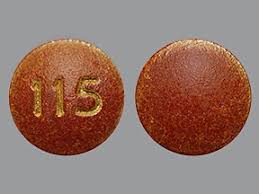Why is this medication prescribed?
Phenazopyridine relieves urinary tract pain, burning, irritation, and discomfort, as well as urgent and frequent urination caused by urinary tract infections, surgery, injury, or examination procedures. However, phenazopyridine is not an antibiotic; it does not cure infections.
How should this medicine be used?
Phenazopyridine comes as a tablet or capsule to take by mouth. It usually is taken three times a day after meals. Do not chew or crush the tablets as it may cause your teeth to become stained; swallow them whole with a full glass of water. You may stop taking this drug when pain and discomfort completely disappear. Follow the directions on your prescription label carefully, and ask your doctor or pharmacist to explain any part you do not understand. Take phenazopyridine exactly as directed. Do not take more or less of it or take it more often than prescribed by your doctor.
Other uses for this medicine
This medication is sometimes prescribed for other uses; ask your doctor or pharmacist for more information.
What special precautions should I follow?
Before taking phenazopyridine,
- Tell your doctor and pharmacist if you are allergic to phenazopyridine or any other drugs.
- Tell your doctor and pharmacist what prescription and nonprescription medications you are taking, including vitamins.
- Tell your doctor if you have or have ever had kidney disease or glucose-6-phosphate dehydrogenase (G-6-PD) deficiency (an inherited blood disease).
- Tell your doctor if you are pregnant, plan to become pregnant, or are breast-feeding. If you become pregnant while taking phenazopyridine, call your doctor.
What should I do if I forget a dose?
Take the missed dose as soon as you remember it. However, if it is almost time for the next dose, skip the missed dose and continue your regular dosing schedule. Do not take a double dose to make up for a missed one.
What side effects can this medication cause?
Phenazopyridine may cause side effects. Your urine may turn a red-orange or brown; this effect is harmless. Tell your doctor if any of these symptoms are severe or do not go away:
- Headache
- Dizziness
- Upset stomach
If you experience any of the following symptoms, call your doctor immediately:
- Yellowing of the skin or eyes
- Fever
- Confusion
- Skin discoloration (blue to bluish-purple)
- Shortness of breath
- Skin rash
- Sudden decrease in the amount of urine
- Swelling of the face, fingers, feet, or legs
If you experience a serious side effect, you or your doctor may send a report to the Food and Drug Administration’s (FDA) MedWatch Adverse Event Reporting program online (http://www.fda.gov/Safety/MedWatch) or by phone (1-800-332-1088).
What should I know about storage and disposal of this medication?
Keep this medication in the container it came in, tightly closed, and out of reach of children. Store it at room temperature and away from excess heat and moisture (not in the bathroom).
Unneeded medications should be disposed of in special ways to ensure that pets, children, and other people cannot consume them. However, you should not flush this medication down the toilet. Instead, the best way to dispose of your medication is through a medicine take-back program. Talk to your pharmacist or contact your local garbage/recycling department to learn about take-back programs in your community. See the FDA’s Safe Disposal of Medicines website (http://goo.gl/c4Rm4p) for more information if you do not have access to a take-back program.
It is important to keep all medication out of sight and reach of children as many containers (such as weekly pill minders and those for eye drops, creams, patches, and inhalers) are not child-resistant and young children can open them easily. To protect young children from poisoning, always lock safety caps and immediately place the medication in a safe location – one that is up and away and out of their sight and reach. http://www.upandaway.org
In case of emergency/overdose
In case of overdose, call the poison control helpline at 1-800-222-1222. Information is also available online at https://www.poisonhelp.org/help. If the victim has collapsed, had a seizure, has trouble breathing, or can’t be awakened, immediately call emergency services at 911.
What other information should I know?
Keep all appointments with your doctor and the laboratory. Your doctor will order certain lab tests to check your response to phenazopyridine.
Phenazopyridine can interfere with laboratory tests, including urine tests for glucose (sugar) and ketones. If you have diabetes, you should use Clinitest rather than Tes-Tape or Clinistix to test your urine for sugar. Urine tests for ketones (Acetest and Ketostix) may give false results. Before you have any tests, tell the laboratory personnel and doctor that you take this medication.
Phenazopyridine stains clothing and contact lenses. Avoid wearing contact lenses while taking this medicine.
Do not let anyone else take your medication. Your prescription is probably not refillable.
If you still have symptoms after you finish the phenazopyridine, call your doctor.
It is important for you to keep a written list of all of the prescription and nonprescription (over-the-counter) medicines you are taking, as well as any products such as vitamins, minerals, or other dietary supplements. You should bring this list with you each time you visit a doctor or if you are admitted to a hospital. It is also important information to carry with you in case of emergencies.
Brand names
- Azo-Standard®
- Baridium®
- Nefrecil®
- Phenazodine®
- Prodium®
- Pyridate®
- Pyridium®
- Sedural®
- Uricalm®
- Uristat®
- Uropyrine®
- Urodine®
- Urogesic®


